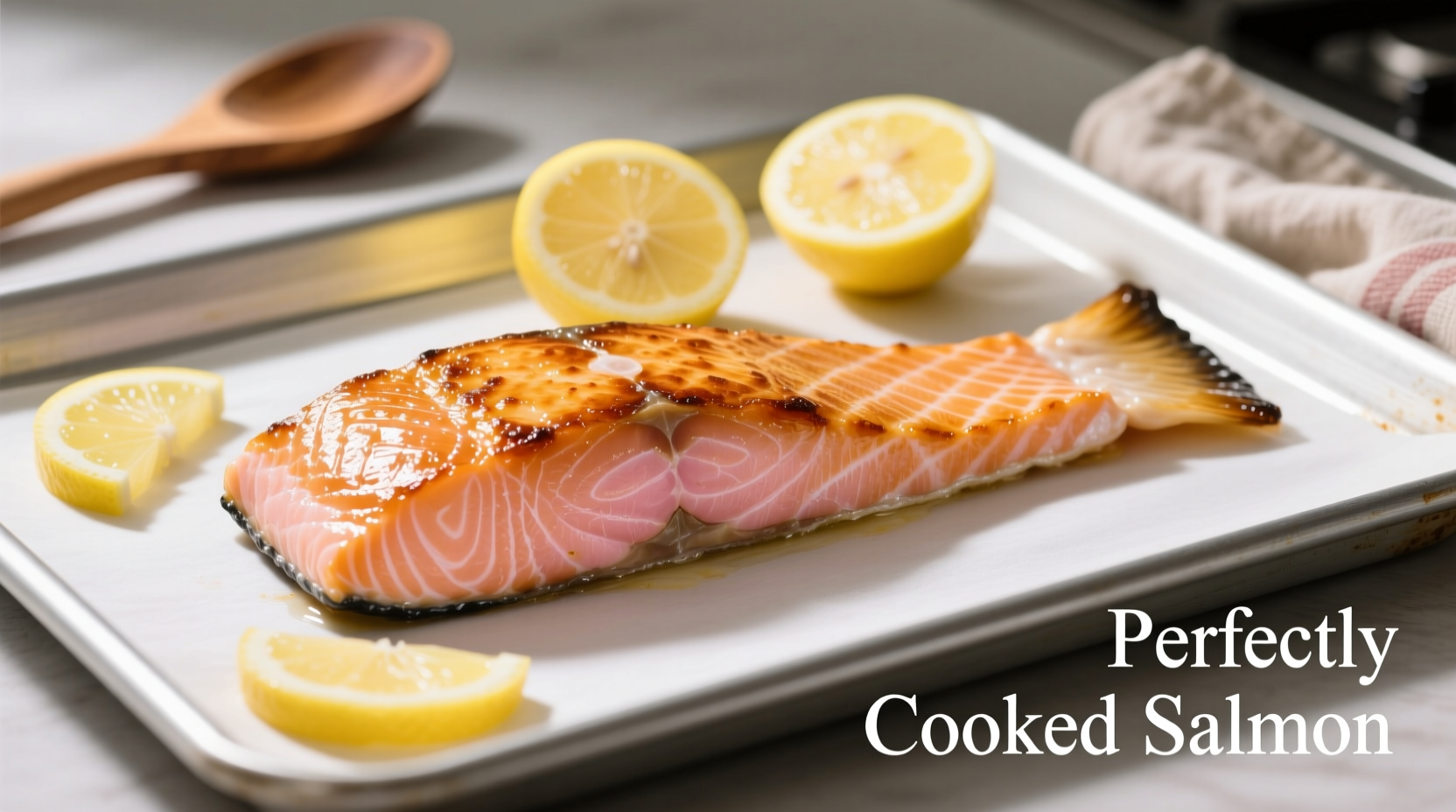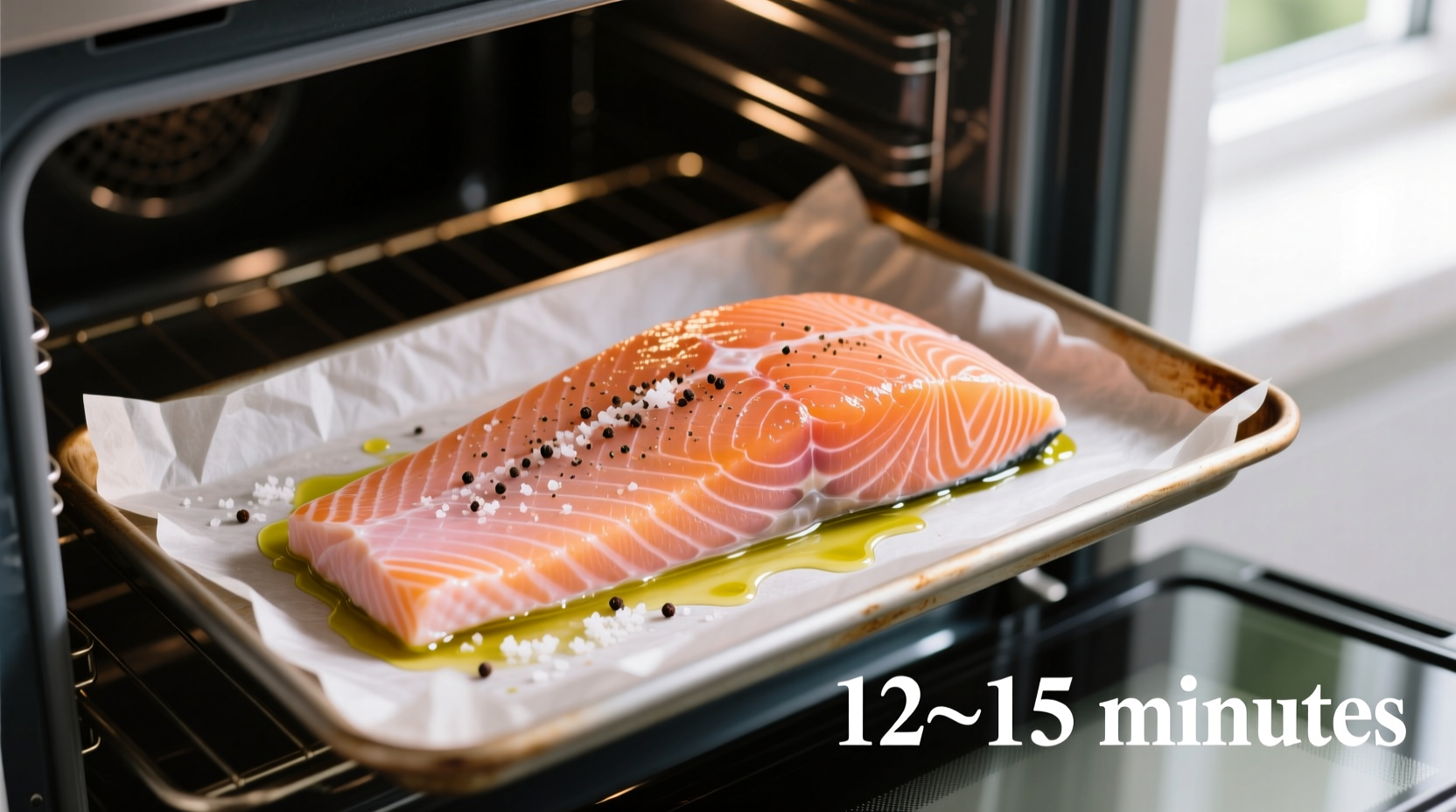The Complete Path to Perfect Oven-Baked Salmon
Getting oven-baked salmon right isn't just about timing—it's understanding how thickness, starting temperature, and desired doneness affect your results. As a chef who's cooked thousands of salmon portions across professional kitchens, I'll show you exactly how to achieve restaurant-quality results at home, every single time.
Why Timing Alone Isn't Enough
Many home cooks make the mistake of relying solely on cooking time. But salmon thickness varies dramatically—from delicate 3/4-inch fillets to substantial 2-inch steaks. The USDA Food Safety and Inspection Service confirms that internal temperature is the only reliable indicator of doneness, not elapsed time. Your salmon continues cooking after removal from the oven (carryover cooking), adding 5-10°F to the final temperature.
Your Step-by-Step Path to Perfect Salmon
Preparation Essentials
Dry your salmon thoroughly with paper towels—moisture is the enemy of proper searing. Season with salt 15 minutes before cooking to enhance texture. For best results, bring salmon to room temperature for 20-30 minutes before baking. This critical step, emphasized by the Culinary Institute of America's cooking guidelines, ensures even cooking throughout the fillet.

Setting Your Oven Temperature
400°F (200°C) delivers the ideal balance: hot enough to create a delicate crust while cooking through gently. Lower temperatures (325°F) work for slow-roasting thicker cuts, while 425°F creates crispier skin on skin-on portions. Always preheat your oven fully—this isn't optional. An oven thermometer verifies actual temperature, as built-in thermostats can be off by 25°F or more.
The Baking Process: Time by Thickness
Follow this professional kitchen reference for timing guidance. Remember these times assume 400°F oven temperature and room-temperature salmon:
| Salmon Thickness | Approximate Time | Target Internal Temp |
|---|---|---|
| 3/4 inch or less | 8-10 minutes | 120-125°F |
| 1 inch | 10-12 minutes | 125-130°F |
| 1.5 inches | 12-15 minutes | 130-135°F |
| 2 inches or more | 15-20 minutes | 135-140°F |
Doneness Checkpoints: Beyond the Clock
Timing provides a starting point, but these visual and tactile indicators confirm perfect doneness:
- Flake test: Gently press center with fork—it should separate into large flakes but remain moist
- Color change: Translucent pink becomes opaque throughout (not chalky white)
- Texture: Should feel slightly firm but yield gently to pressure
- Thermometer: The gold standard—insert into thickest part away from bone
According to seafood safety guidelines from the National Oceanic and Atmospheric Administration (NOAA), while 145°F is the minimum safe temperature, most chefs pull salmon at 125-135°F because carryover cooking brings it to safe temperatures while preserving optimal texture.
Resting and Serving: The Critical Final Step
Remove salmon from oven when 5°F below target temperature. Tent loosely with foil and rest for 5 minutes. This allows proteins to relax and redistribute juices. Skipping this step causes precious moisture to escape when cut, resulting in dry salmon. For skin-on portions, place skin-side down on a wire rack during resting to maintain crispness.
Troubleshooting Common Issues
Dry, overcooked salmon: Usually caused by exceeding 140°F internal temperature or skipping the resting phase. Solution: Start checking temperature 3 minutes before expected finish time.
Rubbery texture: Often happens when frozen salmon isn't fully thawed. Solution: Thaw in refrigerator for 24 hours, never at room temperature.
Uneven cooking: Occurs with irregularly shaped fillets. Solution: Tuck thin tail ends under for even thickness.
Pro Flavor Variations
Master the basic technique first, then experiment with these chef-approved enhancements:
- Lemon-dill crust: Press fresh dill and lemon zest into surface before baking
- Maple-mustard glaze: Brush with 2 tbsp maple syrup + 1 tbsp Dijon 5 minutes before finish
- Mediterranean style: Top with cherry tomatoes, olives, and capers during last 5 minutes
Remember: Always add wet ingredients like sauces during the final third of cooking to prevent burning.
Why This Method Works
High-heat baking creates a delicate Maillard reaction on the surface while gently cooking the interior. This technique, validated by food science research at the University of California, Davis, preserves omega-3 fatty acids better than prolonged high-heat methods like grilling. The result? Moist, flavorful salmon with maximum nutritional benefit.











 浙公网安备
33010002000092号
浙公网安备
33010002000092号 浙B2-20120091-4
浙B2-20120091-4